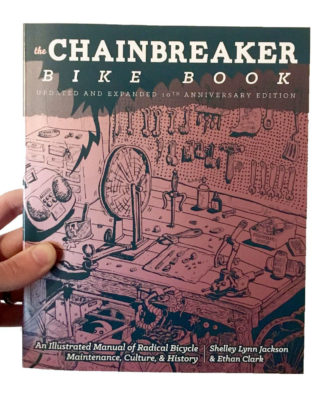COVID-19 broke global bicycle supply chains, resulting in long waits for new bikes and making bike parts harder for shops to stock. King 5 recently talked to two Lynnwood shops, Gregg’s Lynnwood Cycle and Harvy’s Bikes, about the shortage and how they’re dealing with it.
The shortage is the result of a number of factors, as Bicycle Retailer and Industry News (“BRAIN”) reported in February. The pandemic slowed production as demand skyrocketed as people looked for new ways to get around and get exercise. A huge percentage of bikes and components are made in Taiwan, but the pandemic has limited the mobility of workers the bike manufacturers need.
“Taiwan’s factories depend on guest workers from Thailand, Vietnam, Indonesia, and the Philippines,” BRAIN reported. “But coronavirus restrictions are curtailing labor migration and limiting factories’ abilities to increase production.”
The cost for raw materials is also up (aluminum is up 15%, steel 20%, rubber 50%). Shipping is slower and more expensive, as well. But the problem in the U.S. was compounded by Trump’s trade war with China because his 25% tariffs included many bike parts. So before the pandemic hit, some U.S. distributors were holding off on making orders in hopes he would end his tantrum or add bike parts to the lengthy list of tariff exceptions. This meant that the U.S. already had a shortage before the pandemic even started.
Supply did increase significantly in March, but few people think it will be enough to satisfy demand. BRAIN reports that the shortage is expected to last into 2022.
Harvy Massoud, owner of Harvy’s Bikes, mentions in the King 5 video that people are bringing in a lot of old rusty bikes in hopes that they can fix them up. He said the repair business is probably double a typical year.

Bike repair geeks and anarchist bike collectives, you’ve been training for this moment. We gotta make what we have last. So many bike components are usually easier (and sometimes cheaper) to replace rather than repair, but that might not be the case anymore. If you have ever been interested in bike maintenance, now is a great time to learn. Much of it is not difficult at all and can extend the life of your bike’s components. Even simply cleaning and lubing your chain and cassette will go a long way. Cleaning your rims can extend the life of your brake pads (if you have rim brakes). And every bike tube patch is a badge of honor.
I still like the Chainbreaker Bike Book by Ethan Clark and Shelley Lynn Jackson as a very approachable illustrated bike repair guide, especially for slightly older bikes (it might not have the most modern stuff in it, though it was updated a couple years ago). Bike Works is also about to begin an in-person Bike Repair 101 class for adults.
Do you have a favorite resource for beginner bike maintenance? Let us know in the comments below.








Comments
6 responses to “Bike shortage shows very few signs of easing up before 2022”
Received a quote on a basic tune-up for (2) bikes from Gregg’s and I was stunned at the $250 price for service. I feel sorry for the mom’s & dad’s who have to endure the price gouging just to get their kid’s actively mobile here in these post-pandemic days
Break it down in to what you consider a fare hourly wage for skilled labor, parts, and all the overhead of running a business.
If you don’t think it takes skilled labor to work on whatever bike rolls in the door – pick up that book Tom linked and get to work yourself.
Not really a repair tip, but for the past year I’ve been in the market for a gravel bike to do some bikepacking with. Pretty much nothing has been available in my size (55/56) or price range (under $2000) so I bought the fattest knobby tires (33s) that I could put on my commuter road bike, and now I have a passable ride for bikepacking this summer.
One part of the problem is that the mainstream bike industry (like everything else) is increasingly driven by marketing and planned obsolesence, and not sound design and engineering. A bike should not have to cost as much as a motorcycle, especially if it is made in Taiwan with cheap labor. They are only 30 pounds or so of raw material and not particularly complicated unless you make them that way on purpose. I like to keep some basics on hand, like chains/cables/brake pads/tires/tubes , so I dont have to run to the bike shop every time something needs replacing. The pandemic hasnt been a problem for me, I could probably keep my fleet of older but high quality bikes running for 20 years with what I have in my garage right now.
In upgrading my 11-year-old fast-commuter road bike this year to something with discs, can take bigger tires, and is still fast, I ended up paying about $1000 premium over the build offered by the manufacturer for a local bike shop to do a build for me with the same frame. It was the only way to get something I wanted before 2022.
The Bike Works class sounded interesting, but “masks required, vaccination recommended” is a dealbreaker for me. Vaccination required and masks recommended would be much more sensible.